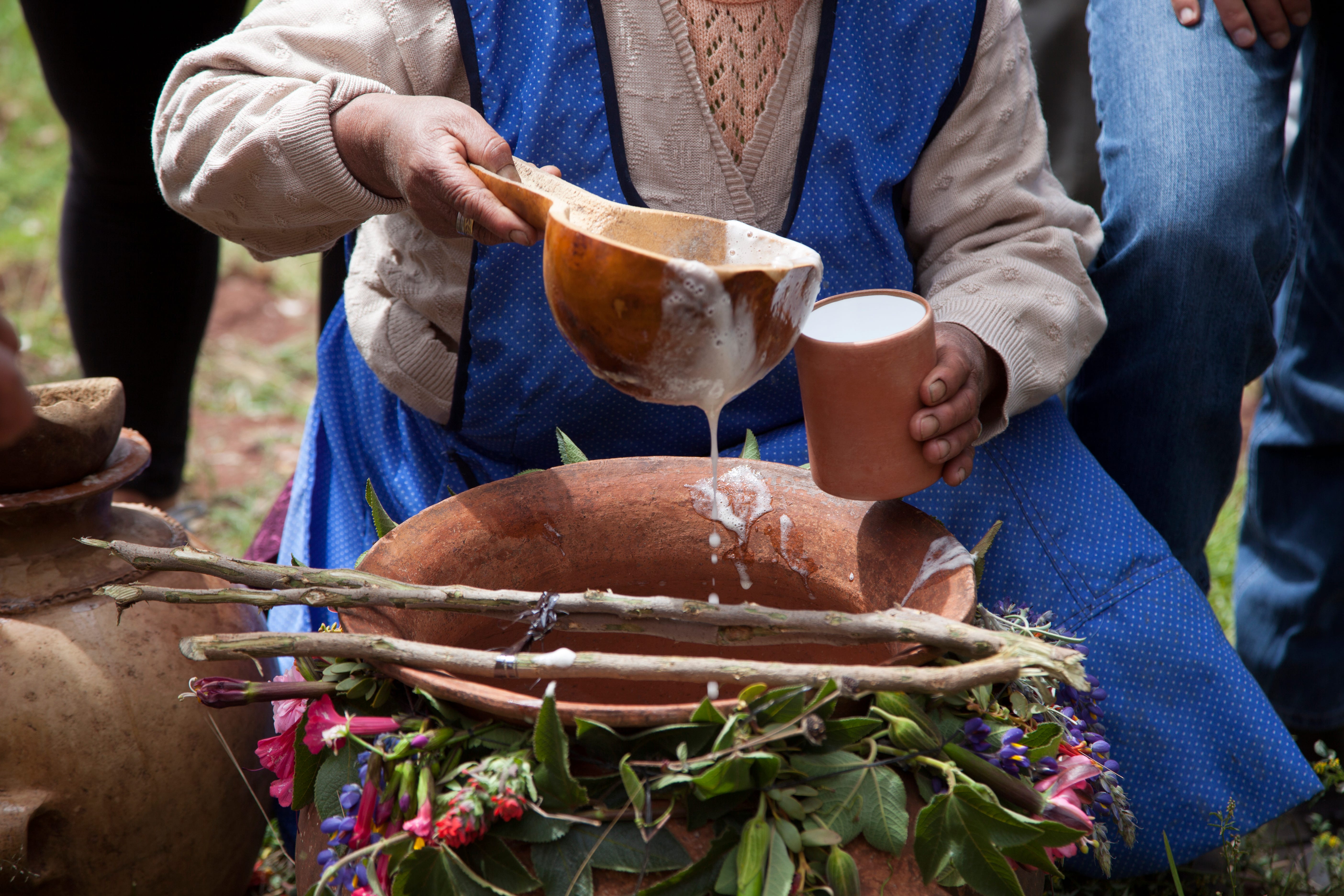A Guide to Chichas & Other Fermented Beverages in the Americas
From Chicha de Jora to Masato de Pijuayo.
As far back as the first encounters with Europeans, the fermented drinks of the Americas have been a target for colonization. With its ties to non-Christian religions and allegations of health concerns, the Spanish Crown tried to outlaw pulque production after conquering the Aztecs.
Not much later, in 1532, when Atahualpa met with Francisco Pizarro and Fernando de Soto in Cajamarca, Inca sources describe him offering them gold cups filled with chicha, to which they pour on the ground. Visibly offended, they offer him a bible and in return he tosses it on the ground. The next day the battle for the Inca Empire began.
By the end of the 19th century, it is believed that there were more than 900 chicherías in Bogotá, Colombia. In the early 20th century, Bavaria Brewery, started to place advertisements in local newspapers that not only promoted their beers as something that do not require human spit to make, while describing chicha as something that lead to crime and gambling and was anti-hygienic. The propaganda caused a shift in public opinion and eventually the government enacted so many regulations that informal chicherías could no longer operate. Laws regarding fermented beverages still can be traced back to this initial backlash against chicha and they continue to prevent all sorts of artisan alcoholic beverages from being developed (Refer to my interview with sommelier Laura Hernandez).
For the past 500 years, artisan fermented beverages have been seen as less than their counterparts elsewhere in the world. They have been displaced by products from different cultures and landscapes to the point that the recipes for many have disappeared completely. Show them love whenever and however you can.
Crisscrossing the Americas for the past two decades-ish has given me a look at a vast array of these fermented drinks. They are artisanal in nature and many have histories dating back a millenia or more. Many go by the name chicha, which usually signifies a drink made from corn, though the term is much broader than many realizes. When looking at it from a wider viewpoint, the term comes to encompass an array of different drinks. Some are made from fruits. Others grains. Some are fermented. Some are not.
Some of these drinks, such as chicha de jora from the Andes and tepache from Mexico, have managed to gain some wider appeal, though for the most part, the thousands of regional drinks are made only on select special occasions from groups of people that are fewer in number each year.
Yet, there has been some renewed interest in recent years. There is hope. Many communities have continued to guard these recipes and carry on the cultural traditions surrounding them. As fermentation enthusiasts grow in number, some of these drinks are being sought out and given a lifeline. Restaurants are paying increased attention to them as well.
At Mena, Chilean chef Victoria Blamey’s restaurant in New York City, chicha was an important part of the menu. Working in conjunction with Dr. Arielle Johnson, they created a range of small batch chichas using seasonal products, like Purple Barley/Wild Apple/Cara Cara Blossom and Wild Strawberry/Rhubarb/Dulse. They stood on their own amidst a stellar drink program of low intervention wines and creative cocktails.
Elsewhere, at restaurants like Mil outside of Cuzco in Chichería Demente in Bogotá, chichas are laying the foundations for their bar programs. And why shouldn’t they? These are the recipes of this landscape, created to utilize its excess harvests, for both sustenance and celebration. What if every kombucha brewer – and there must be thousands in Latin America at this point – started to experiment with these ancient traditions as well? What would come of it? Think about that.
The following guide, available only to paid subscribers, is by no means a complete guide to all of the alcoholic beverages in the Americas, or even the traditional fermented ones. Plus, if we introduced macerations into this there would be thousands more listings. The 16 chichas and other fermented beverages listed feature general preparation instructions.
In honor of my birthday at the end of the month, which conveniently aligns with Peru’s Independence celebration, I’m offering a 35% discount on annual subscriptions until July 31. That’s less than $25 for a full year instead of $40!!
Keep reading with a 7-day free trial
Subscribe to New Worlder to keep reading this post and get 7 days of free access to the full post archives.




